Class Reptilia Phylum Chordata Rank Species | Subphylum Vertebrata Suborder Serpentes Subfamily Xenodontinae Order Scaled reptiles | |
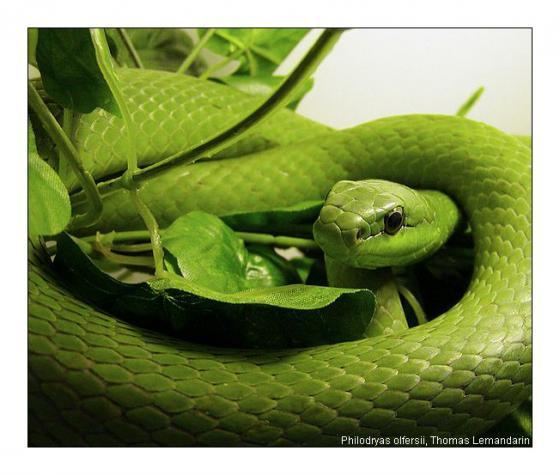 | ||
Similar Philodryas, Philodryas patagoniensis, Chironius, Velvet swampsnake, Thamnodynastes | ||
Philodryas olfersii is a species of colubrid snake, endemic to South America, known by the common names Lichtenstein's green racer, South American green racer, and eastern green whiptail, and in Brazil, cobra-cipó, cobra de São João, cobra-facão, cobra-verde, and mboi-obi.
Contents
- Etymology
- Geographic range
- Description
- Habitat
- Behavior
- Diet
- Reproduction
- Venom
- Parasites
- Subspecies
- References
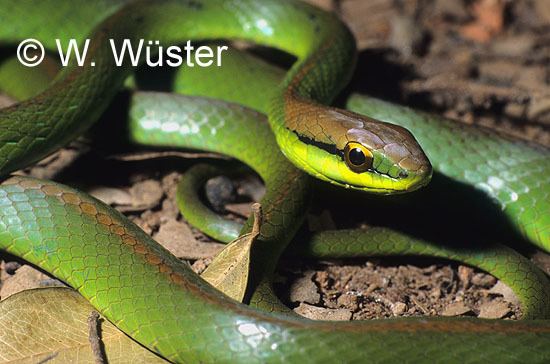
Etymology
The specific name, olfersii, is in honor of German naturalist Ignaz von Olfers.
Geographic range
It is native to southern South America, including Bolivia, northwestern Paraguay, northern Argentina.
Description
P. olfersii reaches 1 to 1.5 meters (about 40 to 60 inches) in maximum total length.
Dorsally, it is green in color; ventrally, it is yellowish.
The dorsal scales are smooth, without apical pits, and are arranged in 19 rows at midbody.
Habitat
It can be found in many habitat types, including the Cerrado, Caatinga, forests, forest transition, and restinga.
Behavior
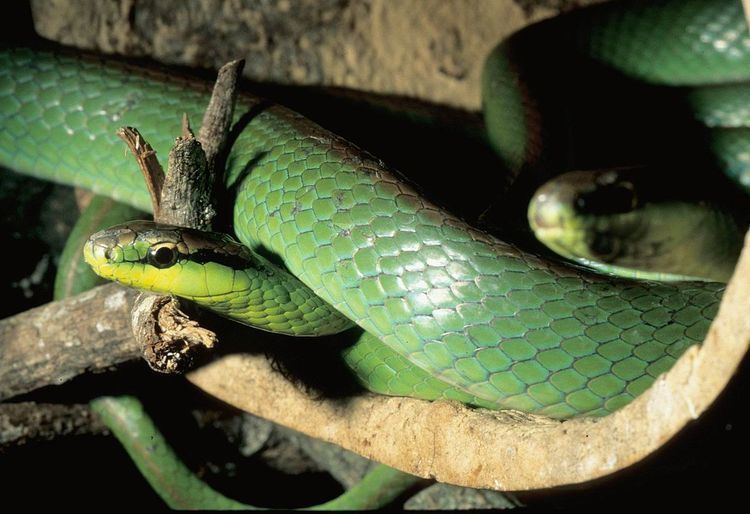
This species is often arboreal, but it also forages on the ground. It is diurnal, though it has been observed mating late in the evening.
Diet
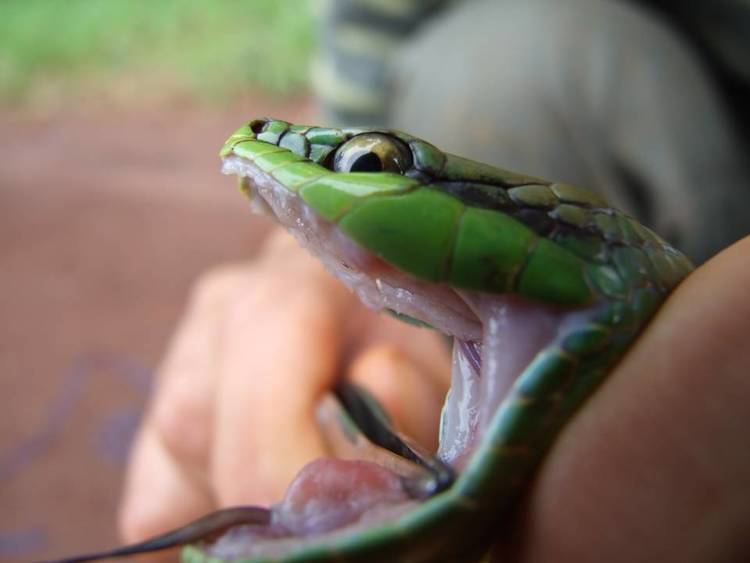
Prey items include rodents, lizards, amphibians, and birds, especially nestlings. They will also eat other snakes, including ones almost as large as themselves.
Reproduction
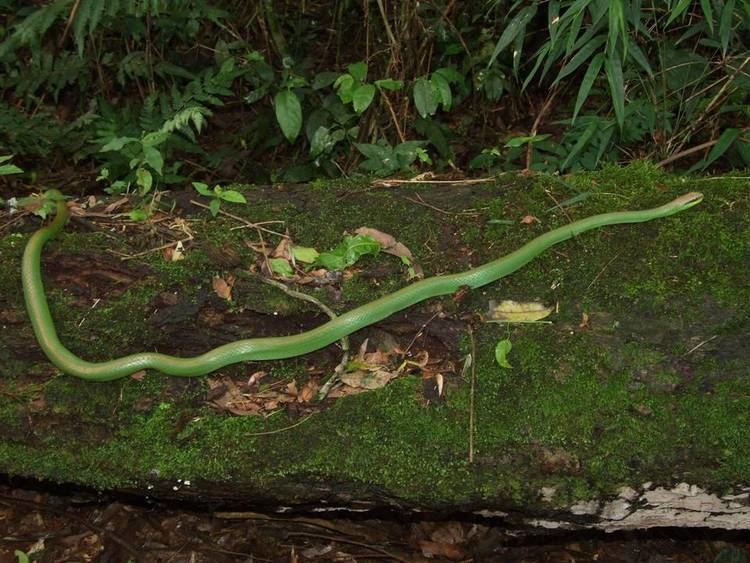
The egg of the snake measures about 5 centimeters (about 2 inches). The clutch size is 4 to 11 eggs, with larger females producing more eggs than smaller ones.
Venom
Snake species in the genus Philodryas are not considered venomous. However, P. olfersii is a venomous snake and there have been reports of serious bites causing local and systemic effects requiring medical treatment. The most common symptoms are pain, swelling, erythema, and ecchymosis. There may be a pulsing sensation or numbness at the bite site. Some pus can develop and nearby lymph nodes may enlarge. Bruising or other discoloration can appear quite a distance from the wound site, sometimes occurring far up the arm after a hand wound, even progressing to the neck, chest, and abdomen. Stiffness may affect the entire limb. Patients complaining of snakebite may be given an antivenom for Bothrops snake venom, which is inappropriate for the treatment of Philodryas bites. Philodryas does not cause the coagulopathy that Bothrops does. The bite of this snake is almost never lethal; only one fatality has been reported, and that in a child.
The secretion that causes injury to bite victims is produced in the snake's Duvernoy's gland and channeled into its prey via a grooved tooth. It is myotoxic, causing muscle damage; muscle tissue hemorrhages and becomes necrotic. The secretion contains toxins such as serine proteases, metalloproteases, C-type lectins, cysteine-rich secretory proteins, and a C-type natriuretic peptide.
Parasites
This snake is host to a newly described species of parasitic protozoan, Caryospora olfersii. It has also been recorded carrying C. braziliensis.
Subspecies
Some sources do not recognize any subspecies. However, other sources recognize the following three subspecies, including the nominotypical subspecies:
